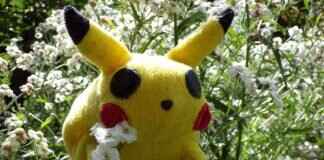This article explores the vibrant celebrations of Holi in New York, highlighting the best places to experience this colorful festival, along with practical insights for attendees.
Holi, also known as the Festival of Colors, is a significant Hindu festival that marks the arrival of spring and the triumph of good over evil. Celebrated with great enthusiasm, it is a time for families and friends to come together, share joy, and spread love. The festival has deep cultural roots, originating from ancient Hindu mythology, where it is associated with the legend of Prahlad and Holika. Holi also signifies the end of winter and the beginning of the harvest season, making it a time of renewal and hope.
New York City is home to numerous parks that serve as perfect venues for Holi celebrations. Some of the best parks include:
- Central Park – With its vast open spaces, Central Park hosts large gatherings where participants can engage in color throwing and enjoy cultural performances.
- Flushing Meadows Corona Park – Known for its scenic beauty, this park often features organized Holi events that include music, dance, and food stalls.
- Prospect Park – Located in Brooklyn, this park is a popular spot for community celebrations, attracting diverse crowds who come to celebrate together.
Community events play a crucial role in bringing people together during Holi. Various organizations and cultural groups in New York host events that are open to everyone. Some notable events include:
- Holi at the Queens Museum – This event features art, music, and dance, allowing attendees to immerse themselves in the cultural aspects of Holi.
- Holi Festival at the Sri Maha Lakshmi Temple – A spiritual celebration that includes traditional rituals, music, and food.
- Community Gatherings in Jackson Heights – This vibrant neighborhood often hosts street festivals that attract large crowds to celebrate Holi.
In New York, Holi is celebrated by a diverse array of communities, each adding their unique flavor to the festivities. It serves as a reminder of unity and togetherness, transcending cultural boundaries. The festival encourages people from all backgrounds to participate, fostering a sense of community and belonging. Various cultural organizations work tirelessly to ensure that the essence of Holi is preserved while adapting to the multicultural landscape of New York.
Temples across New York City are pivotal in celebrating Holi, offering spiritual and cultural experiences. Major temples such as:
- Ganesh Temple in Flushing – Hosts elaborate Holi celebrations with traditional music, dance, and community feasting.
- Hindu Temple Society of North America – Organizes vibrant festivities that include performances, rituals, and color play.
These temples provide a space for individuals to connect with their roots while celebrating the joyous occasion.
No celebration of Holi is complete without indulging in traditional delicacies. Popular foods that are often enjoyed during this festival include:
- Gujiya – A sweet dumpling filled with khoya and dried fruits.
- Bhang Lassi – A refreshing drink made with yogurt and infused with cannabis, traditionally consumed during Holi.
- Thandai – A spiced milk drink that is a favorite during the festival.
Local restaurants and food stalls across New York offer these delicacies, allowing attendees to savor the flavors of Holi.
Holi is a family-oriented festival, and New York offers a variety of activities suitable for all ages. Families can enjoy:
- Color Runs – Participate in fun runs where participants throw colors at each other.
- Arts and Crafts Workshops – Engage in creative activities that allow children to make their own Holi-themed crafts.
These activities not only entertain but also educate children about the significance of Holi.
While Holi is a joyous occasion, safety should always be a priority. Here are some essential tips:
- Use Organic Colors – Opt for natural colors to avoid skin irritations.
- Stay Hydrated – Drink plenty of water, especially if participating in outdoor events.
- Protect Your Eyes – Wear sunglasses to shield your eyes from colored powders.
Certain neighborhoods in New York are renowned for their lively Holi celebrations. Areas such as Jackson Heights and Richmond Hill in Queens are particularly vibrant, hosting street fairs and community events that celebrate the spirit of Holi.
Music and dance are integral to Holi festivities. Various venues across New York feature live performances, including:
- Bollywood Dance Parties – Many clubs and community centers host dance parties with DJs playing popular Bollywood tracks.
- Cultural Performances – Local artists often showcase traditional dance forms, adding to the festive atmosphere.
To fully enjoy Holi, it’s essential to have the right supplies. Local markets and shops in neighborhoods like Jackson Heights offer a variety of colors, festive clothing, and accessories.
Volunteering during Holi can enhance your experience. Many organizations seek volunteers to help with event organization, food distribution, and cultural performances.
To capture the vibrant essence of Holi, consider these photography tips:
- Use a Fast Shutter Speed – This will help freeze the action as colors fly through the air.
- Protect Your Camera – Use a waterproof cover to safeguard your equipment from colored powders.
In today’s digital world, virtual celebrations of Holi have gained popularity. Many organizations host online events, allowing people to connect and celebrate together from the comfort of their homes.
Sharing personal stories adds depth to the celebration of Holi. Many individuals recount their experiences of joy, togetherness, and cultural pride during this vibrant festival.
As New York continues to evolve, so do its Holi celebrations. The integration of technology and a growing emphasis on inclusivity are likely to shape future festivities.

Understanding Holi: The Festival of Colors
Holi, often referred to as the Festival of Colors, is a vibrant celebration that marks the arrival of spring and the triumph of good over evil. This ancient festival, rooted in Hindu mythology, is celebrated with enthusiasm and joy across India and in various parts of the world, including New York. The essence of Holi lies not only in its colorful festivities but also in its rich historical and cultural significance.
The origins of Holi can be traced back to ancient Hindu texts and legends. One of the most popular stories associated with Holi is that of Prahlad and Holika. According to the myth, Prahlad, a devout follower of Lord Vishnu, faced persecution from his father, King Hiranyakashipu, who demanded that everyone worship him instead of the gods. To protect Prahlad, his aunt Holika, who was immune to fire, attempted to burn him alive. However, due to divine intervention, Holika perished, and Prahlad emerged unscathed. This tale symbolizes the victory of faith and devotion over tyranny, which is a central theme of Holi.
In addition to its mythological roots, Holi also marks the end of winter and the beginning of spring. It is a time when nature comes alive, with flowers blooming and trees regaining their lush greenery. This seasonal change is celebrated through the playful throwing of colored powders, known as gulal, which represent the vibrant colors of spring. The act of throwing colors at one another serves as a reminder of the joy and happiness that spring brings, fostering a sense of community and togetherness.
Beyond its religious significance, Holi has evolved into a cultural phenomenon that transcends boundaries. In New York, the festival has become a melting pot of cultures, bringing together people from diverse backgrounds to celebrate unity and harmony. Local communities organize events that feature traditional music, dance, and food, allowing participants to immerse themselves in the festive spirit. These celebrations promote inclusivity and understanding, making Holi a truly global event.
Furthermore, Holi serves as a reminder of the importance of forgiveness and renewal. It is customary for people to forgive past grievances and start anew, symbolizing the cleansing of the soul. This aspect of Holi resonates deeply with individuals seeking to strengthen their relationships and foster a sense of belonging within their communities.
In summary, Holi is much more than just a festival of colors; it embodies the essence of spring, the victory of good over evil, and the celebration of unity among diverse cultures. As people gather to partake in the joyous festivities, they not only honor ancient traditions but also create new memories that reflect the spirit of togetherness. Whether through the vibrant colors, the laughter of children, or the shared meals, Holi continues to inspire love and joy, making it a cherished celebration for all.

Top Parks for Holi Celebrations in New York
New York City, a vibrant melting pot of cultures, offers a plethora of parks that serve as ideal venues for the colorful festival of Holi. Each park provides a unique atmosphere, allowing attendees to immerse themselves in the joyous celebrations filled with colors, music, and community spirit. Below, we explore some of the best parks where you can celebrate Holi in New York.
- Central Park: Arguably the most iconic park in New York, Central Park offers vast open spaces perfect for Holi festivities. The Great Lawn is a popular gathering spot where families and friends come together to throw colors, dance, and enjoy traditional Holi snacks. The scenic backdrop of the park enhances the festive atmosphere, making it a favorite for many.
- Flushing Meadows-Corona Park: Known for its spaciousness, Flushing Meadows-Corona Park is another excellent location for Holi celebrations. The park features large fields and beautiful landscapes that provide ample room for activities. Local organizations often host events here, bringing together diverse communities to celebrate the festival with music, dance, and, of course, vibrant colors.
- Prospect Park: Located in Brooklyn, Prospect Park is a hub for cultural events, making it a prime spot for Holi celebrations. The park’s sprawling meadows and picturesque lake create an inviting environment for participants. Many community groups organize Holi events that include live performances, food stalls, and interactive activities for families.
- Riverside Park: This park stretches along the Hudson River, offering stunning views and a peaceful atmosphere. Riverside Park is ideal for those looking to celebrate Holi in a serene setting. The park often hosts smaller, intimate gatherings where attendees can enjoy traditional music, dance, and the joy of throwing colors in a more relaxed environment.
- Van Cortlandt Park: Located in the Bronx, Van Cortlandt Park is one of the largest parks in New York City. Its expansive fields are perfect for large Holi gatherings. The park’s natural beauty, combined with organized events, makes it a fantastic location to celebrate the festival with friends and family.
Each of these parks not only provides ample space for Holi festivities but also fosters a sense of community. As people come together to celebrate, they create lasting memories filled with laughter, joy, and the spirit of unity.
Whether you are a local or a visitor, participating in Holi celebrations in these parks will surely be an unforgettable experience. Make sure to check local listings for specific events, as many community organizations plan vibrant celebrations that include music, dance, and traditional food, enhancing the overall festive experience.
As you prepare to celebrate Holi in New York, remember to wear clothes that you don’t mind getting stained, as the colors can be challenging to wash out. Bring along water bottles to stay hydrated, and don’t forget to capture the colorful moments with your camera!

Community Events: Where to Join Holi Celebrations
Community events are the heartbeat of Holi celebrations, especially in a vibrant city like New York. These gatherings foster a sense of belonging and unity among diverse communities, allowing people to come together and celebrate the Festival of Colors in a joyful atmosphere. From organized festivals in parks to local neighborhood events, there are countless opportunities for everyone to participate and immerse themselves in the festivities.
One of the most popular community events during Holi is the Holi Festival in Queens. This event attracts thousands of attendees each year, featuring live music, dance performances, and, of course, the joyous throwing of colors. Families, friends, and even strangers come together to celebrate, creating a vibrant tapestry of colors and laughter. The festival often includes food stalls offering traditional Holi delicacies, enriching the experience with delightful culinary treats.
In addition to large festivals, there are many smaller neighborhood gatherings throughout the city. Local community centers and cultural organizations often host events that are more intimate yet equally spirited. These gatherings are perfect for families looking to introduce their children to the fun of Holi in a safe and welcoming environment. Activities may include color play, music, dance, and even art workshops, allowing participants to engage creatively with the festival.
Moreover, many temples in New York also organize Holi celebrations, which not only focus on the joyous aspects of the festival but also incorporate spiritual elements. These events often feature prayers, traditional music, and community meals, providing a holistic experience that emphasizes both the cultural and religious significance of Holi.
To ensure everyone can join in the fun, many community events are designed to be accessible. Organizers often provide resources for individuals with disabilities, ensuring that everyone can participate in the festivities. This inclusivity reflects the true spirit of Holi—bringing people together, regardless of their backgrounds or circumstances.
For those interested in volunteering, many community events welcome help from enthusiastic individuals. Volunteering can enhance your experience, allowing you to meet new people and contribute to the success of the event. Whether it’s helping with setup, distributing colors, or managing activities, there are various opportunities to get involved.
Social media plays a crucial role in promoting these community events. Many organizations utilize platforms like Facebook and Instagram to share event details, engage with attendees, and create excitement leading up to the celebrations. By following local cultural groups and event pages, you can stay updated on all the Holi happenings in your area.
In summary, community events are essential for experiencing Holi in New York. They provide a platform for individuals to connect, celebrate, and create lasting memories. Whether you choose to attend a large festival or a smaller neighborhood gathering, the joy and vibrancy of Holi will undoubtedly leave a lasting impression. So gather your friends and family, and prepare to immerse yourself in the colorful festivities that await!

Cultural Significance of Holi in New York
Holi is not just a festival; it is a vibrant celebration that embodies the spirit of unity and joy. In New York, a city known for its rich tapestry of cultures, Holi transcends its religious roots, becoming a platform for diverse communities to come together and celebrate the arrival of spring. This section delves into the cultural significance of Holi in New York, showcasing how various communities embrace this festival to foster connections and promote inclusivity.
The essence of Holi lies in its ability to bridge cultural divides. In New York, celebrations attract people from various backgrounds, including Indian, Nepali, Bangladeshi, and even those unfamiliar with the festival’s roots. Through vibrant colors, music, and dance, participants engage in a collective experience that emphasizes the importance of community and togetherness. This inclusivity is evident in the way events are organized, often featuring diverse performances and activities that reflect the multicultural fabric of the city.
Community events play a pivotal role in the celebration of Holi in New York. Parks and community centers become lively hubs where families and friends gather to partake in the festivities. These events often include traditional music, dance performances, and a variety of food stalls offering delicious Holi delicacies. By bringing together individuals from different backgrounds, these gatherings foster a sense of belonging and encourage cultural exchange, enriching the overall experience for participants.
Moreover, the significance of Holi extends beyond mere celebration. It serves as a reminder of the importance of harmony and love in society. In a bustling metropolis like New York, where diversity is celebrated, Holi acts as a unifying force, encouraging individuals to set aside differences and embrace the spirit of camaraderie. This is particularly important in today’s world, where social and cultural divisions can often overshadow our shared humanity.
As the festival unfolds, the streets come alive with laughter and joy. Participants engage in playful color throwing, symbolizing the triumph of good over evil and the arrival of spring. This act of throwing colors is not just a fun activity; it embodies the essence of Holi—letting go of past grievances and embracing new beginnings. The vibrant colors represent the diversity of life itself, reminding us that every shade contributes to the beauty of our shared existence.
In addition to local celebrations, Holi in New York has also gained attention through various media platforms, showcasing the festival’s significance to a broader audience. Social media campaigns encourage people to share their experiences, further enhancing community engagement and participation. This digital presence not only promotes awareness but also invites those unfamiliar with the festival to learn and partake in the celebrations, thus expanding the reach and impact of Holi.
In conclusion, the cultural significance of Holi in New York goes beyond its religious origins. It is a celebration of unity, diversity, and the shared human experience. By embracing the festival, New Yorkers from all walks of life come together to celebrate the vibrancy of their communities, fostering connections that transcend cultural barriers. As Holi continues to evolve in this dynamic city, it remains a powerful symbol of joy and togetherness, reminding us all of the beauty found in our differences.

Holi Festivals at Temples in New York
The vibrant festival of Holi, celebrated with colors, joy, and enthusiasm, finds a special place in the hearts of many in New York. Temples across the city play a crucial role in organizing these lively celebrations, offering both spiritual and cultural experiences to attendees. This article delves into the major temples that host Holi events, highlighting their unique offerings and the community spirit they foster during this joyous occasion.
One of the most prominent temples celebrating Holi is the Hindu Temple Society of North America located in Flushing, Queens. This temple has established itself as a hub for cultural activities and spiritual gatherings. During Holi, the temple organizes a grand celebration that includes traditional prayers, music, and of course, the throwing of colors. Attendees can participate in various activities, including dance performances and community meals, which create a sense of unity and joy among participants.
Another noteworthy venue is the Sri Maha Vallabha Ganapati Devasthanam in the Bronx. This temple is known for its vibrant Holi festivities that attract families and individuals from diverse backgrounds. The temple organizes a colorful event filled with live music, dance, and the sharing of delicious traditional sweets. The atmosphere is electric, with people of all ages coming together to celebrate the arrival of spring and the triumph of good over evil.
The ISCKON Temple, also known as the Hare Krishna Temple, located in Manhattan, offers a unique twist to Holi celebrations. Known for its spiritual teachings and community involvement, ISCKON hosts a lively Holi event that includes kirtans (devotional songs), dance, and the distribution of prasadam (sanctified food). The temple emphasizes the spiritual significance of Holi, encouraging attendees to reflect on the deeper meanings of the festival while enjoying the festivities.
In addition to these temples, several smaller Hindu temples throughout New York also organize Holi events, fostering a sense of community and cultural exchange. These celebrations often include workshops on how to make traditional Holi sweets, storytelling sessions about the significance of the festival, and opportunities for attendees to learn about the customs and traditions associated with Holi.
Participating in Holi celebrations at these temples not only allows individuals to enjoy the festival but also provides a platform for cultural education and community bonding. Many temples encourage attendees to bring their families and friends, making it a family-friendly event where everyone can partake in the joy and festivities. The colorful powders used during the celebrations are often made from natural ingredients, ensuring a safe and environmentally friendly experience.
As Holi continues to gain popularity in New York, the role of temples in organizing these celebrations becomes increasingly important. They serve as a beacon of hope and joy, bringing people together from various backgrounds to celebrate the essence of Holi. Whether you are a long-time resident or a newcomer to the city, joining in the Holi festivities at these temples is a wonderful way to immerse yourself in the rich cultural tapestry of New York.
In summary, the Holi festivals at temples in New York offer a unique blend of spirituality and cultural celebration. With vibrant events, engaging activities, and a welcoming atmosphere, these temples play a vital role in making Holi a memorable experience for all. If you’re looking to celebrate this colorful festival, visiting one of these temples is a fantastic way to do so.

Food and Drink: Traditional Holi Delicacies
Holi, the vibrant Festival of Colors, is not only celebrated with joyous festivities but also with a delightful array of traditional foods that add flavor to the occasion. In New York, the multicultural backdrop enhances the variety of delicacies available during this festive time. This section explores some of the most cherished Holi delicacies that you can enjoy, whether at community events or local eateries.
- Gujiya: A quintessential sweet treat, gujiya is a must-have during Holi. These crescent-shaped pastries are filled with a mixture of khoya (dried milk), nuts, and spices. They are deep-fried to golden perfection and often dusted with powdered sugar, making them a favorite among children and adults alike.
- Bhang Thandai: A traditional drink made with milk, nuts, and spices, bhang thandai is often infused with bhang (cannabis) during Holi celebrations. This energizing beverage not only cools you down during the spring heat but also adds a festive spirit to the celebrations.
- Puran Poli: This sweet flatbread, filled with a mixture of jaggery and split yellow gram, is popular in many Indian households during Holi. Served with ghee, puran poli is a delightful way to satisfy your sweet tooth while enjoying the festival.
- Dahi Bhalla: A savory dish, dahi bhalla consists of soft lentil dumplings soaked in yogurt and topped with tangy chutneys and spices. This refreshing dish is perfect for balancing the sweetness of other Holi treats.
- Chole Bhature: A hearty meal often enjoyed during Holi, chole bhature features spicy chickpeas served with deep-fried bread. This dish is a favorite among many and is commonly found at Holi gatherings.
In addition to these traditional foods, many local restaurants and food stalls in New York offer special Holi menus featuring regional dishes from various parts of India. Exploring these options can be a delightful culinary adventure.
Street Food Stalls: During Holi, street food stalls pop up in various neighborhoods, offering a range of snacks like pakoras, samosas, and chaat. These quick bites are perfect for keeping your energy up while you celebrate.
Vegetarian Delights: Since Holi is often celebrated with vegetarian dishes, you can expect to find a variety of flavorful vegetarian options at events and restaurants. From paneer tikka to vegetable biryani, the choices are abundant.
Whether you are celebrating at home or joining a community event, indulging in these traditional Holi delicacies is an essential part of the experience. The flavors and aromas of these foods not only enhance the festivities but also bring people together, creating lasting memories.
As you partake in the celebrations, remember to share these delicious treats with family and friends, as food plays a crucial role in fostering connections during this joyous festival.

Family-Friendly Holi Activities in New York
Holi, the vibrant Festival of Colors, is not just a celebration of spring and joy; it is also a wonderful opportunity for families to come together and engage in various activities that promote unity and happiness. In New York, where the cultural tapestry is rich and diverse, families can find numerous activities that cater to all ages during this festive time. Here, we explore some of the best family-friendly Holi activities that you can enjoy together.
- Color Run Events: Many parks in New York host fun color runs during Holi, where families can participate together. These events typically involve running through clouds of colored powders, creating a playful and exhilarating atmosphere. It’s a fantastic way for families to bond while enjoying the festival’s spirit.
- Holi Workshops: Various community centers and cultural organizations offer workshops where families can learn about the significance of Holi. These workshops often include activities like traditional music, dance, and crafts, allowing families to engage in hands-on experiences that enhance their understanding of the festival.
- Food Festivals: Holi is synonymous with delicious food. Family-friendly food festivals feature traditional Holi delicacies such as gujiya, bhaji, and various sweets. These events not only allow families to enjoy the flavors of Holi but also offer cooking demonstrations where parents and children can learn to make festive dishes together.
- Art and Craft Stations: Many Holi celebrations set up art and craft stations where children can create their own colorful artworks. Families can spend quality time making Holi-themed crafts, such as decorating pots or creating colorful banners. This not only sparks creativity but also provides a keepsake to remember the celebration.
- Live Music and Dance Performances: Attending live music and dance performances is another engaging way for families to celebrate Holi. Many events feature traditional dance performances, including Bhangra and Garba, where families can join in and learn the steps together, creating joyful memories.
- Interactive Storytelling: Some community events include storytelling sessions that narrate the legends behind Holi. These sessions can captivate both children and adults, fostering an appreciation for the festival’s cultural roots. Families can gather around and enjoy these tales, making it an educational experience as well.
- Colorful Parades: New York often hosts vibrant Holi parades, where families can witness colorful floats, dancers, and musicians. These parades create a festive atmosphere and provide an excellent opportunity for families to enjoy the celebration while participating in the lively street festivities.
In addition to these activities, it’s essential for families to prioritize safety during Holi celebrations. Parents should ensure that the colors used are safe and non-toxic, and they should keep an eye on younger children during the festivities. By taking these precautions, families can fully immerse themselves in the joy and excitement of Holi while creating lasting memories together.
Overall, Holi in New York offers a plethora of family-friendly activities that allow families to celebrate the festival in meaningful ways. From engaging in cultural workshops to enjoying delicious food and vibrant performances, there is something for everyone. Embrace the colors of Holi and make this festival a memorable experience for your family!

Safety Tips for Celebrating Holi in New York
Holi, the vibrant Festival of Colors, is a time for joy, celebration, and community. However, amidst the fun, safety must remain a top priority. Here are essential tips to ensure that your Holi experience in New York is not only enjoyable but also safe for everyone involved.
- Choose Safe Colors: When participating in Holi, it’s crucial to use colors that are non-toxic and environmentally friendly. Many commercial colors contain harmful chemicals that can irritate the skin or cause allergic reactions. Look for natural colors made from flowers, herbs, or food items.
- Protect Your Skin and Hair: Apply a generous amount of oil or lotion on your skin and hair before heading out to celebrate. This creates a barrier that makes it easier to wash off colors later. Additionally, consider wearing old clothes that you don’t mind getting stained.
- Stay Hydrated: The festivities can be intense, especially with all the dancing and movement. Ensure you drink plenty of water throughout the day to stay hydrated. Avoid excessive consumption of alcohol, as it can lead to dehydration and impair your judgment.
- Be Mindful of Your Surroundings: Holi celebrations can draw large crowds, especially in popular parks and community events. Always stay aware of your surroundings, and if you feel uncomfortable at any point, seek a safe space or leave the area.
- Supervise Children: If you are celebrating with children, it’s essential to keep a close eye on them. Designate a meeting point in case anyone gets separated and ensure they are wearing protective clothing and gear.
- Respect Personal Boundaries: While Holi is all about fun and play, it’s vital to respect others’ personal space. Always ask for consent before applying color to someone else, and be mindful of individuals who may not wish to participate.
- Plan Your Transportation: If you plan to attend a Holi event, ensure you have a safe mode of transportation. Consider using public transport or rideshare services to avoid parking hassles and ensure a safe journey home.
- Know Emergency Contacts: Familiarize yourself with the local emergency numbers and the locations of nearby hospitals or clinics, just in case someone requires medical attention during the festivities.
- Follow Local Guidelines: Depending on the year, local health guidelines may be in place, especially if there are concerns about public health. Stay informed about any regulations or recommendations from local authorities regarding gatherings.
- Have Fun! While safety is paramount, don’t forget to enjoy the spirit of Holi. Engage in the festivities, dance, and celebrate the joy of togetherness while keeping these safety tips in mind.
By taking these precautions, you can ensure a memorable and safe Holi celebration in New York. Embrace the colors, the music, and the joy of this beautiful festival while prioritizing the well-being of yourself and those around you.

Best Neighborhoods for Holi Celebrations
New York City is a melting pot of cultures, and this diversity is beautifully reflected in the vibrant celebrations of Holi. The Festival of Colors, which marks the arrival of spring and the triumph of good over evil, is celebrated with great enthusiasm in various neighborhoods across the city. If you’re looking to immerse yourself in the lively atmosphere of Holi, here are some of the best neighborhoods to experience this colorful festival.
- Jackson Heights, Queens: Known as one of the cultural hubs for the South Asian community, Jackson Heights hosts some of the most exciting Holi celebrations in the city. The streets come alive with music, dance, and the joyous throwing of colors. Local businesses often participate by offering traditional snacks and drinks, making it a perfect spot for families and friends to gather and celebrate together.
- Flushing, Queens: Another vibrant neighborhood, Flushing, is home to a large Indian and Nepalese population. Holi celebrations here often include colorful parades, live performances, and food stalls that feature authentic dishes. The local temples also organize events that combine spiritual practices with festive activities, allowing attendees to enjoy the cultural richness of Holi.
- Manhattan’s East Village: This neighborhood is known for its artsy vibe and diverse community, making it an ideal place for contemporary Holi celebrations. Various organizations and community groups host events that feature live music, dance performances, and interactive activities for all ages. The East Village offers a unique blend of traditional and modern celebrations, attracting a younger crowd eager to join in the festivities.
- Staten Island: Though often overlooked, Staten Island hosts its own Holi celebrations, particularly in neighborhoods with significant South Asian populations. Local parks become vibrant venues for festivities, where families can enjoy a day filled with colors, music, and traditional food. The sense of community here is palpable, making it a welcoming spot for both newcomers and long-time residents.
- Brooklyn’s Little India: The area around Coney Island Avenue is often referred to as Little India, where Holi is celebrated with great fervor. The neighborhood is dotted with Indian restaurants and shops that get involved in the festivities. Expect to see colorful processions, community gatherings, and plenty of opportunities to indulge in delicious Indian cuisine.
Each of these neighborhoods offers a unique flavor of Holi, showcasing the rich tapestry of cultures that make up New York City. Whether you’re looking for traditional festivities or more modern interpretations of the festival, these areas provide an exciting backdrop for celebrating the joyous spirit of Holi. Make sure to check local listings and community boards for specific events and timings, as they can vary each year.
As you prepare to celebrate Holi in New York, remember to embrace the spirit of togetherness and joy that this festival represents. With so many neighborhoods participating in the celebrations, you’re sure to find a vibrant atmosphere filled with laughter, music, and, of course, an explosion of colors!

Live Music and Dance: Holi Entertainment in New York
During Holi, the vibrant Festival of Colors, music and dance take center stage, creating an atmosphere filled with joy and celebration. In New York, a city known for its rich cultural diversity, the Holi festivities are marked by a plethora of live performances and dance events. This section will guide you through the best spots to experience the exhilarating performances that embody the spirit of Holi.
One of the most exciting aspects of Holi in New York is the array of live music performances that can be found across the city. Various cultural organizations and community groups host events that feature traditional Indian music, including Bollywood hits, folk songs, and classical melodies. These performances not only entertain but also educate attendees about the cultural significance of the festival.
- Central Park Holi Celebration: One of the largest Holi celebrations in New York takes place in Central Park. Here, you can find live bands playing traditional and contemporary music, along with dance performances that invite everyone to participate. The atmosphere is electric, with colorful powders flying through the air as people dance to the rhythm of the music.
- Brooklyn Holi Festival: Another popular event is the Brooklyn Holi Festival, which features a lineup of local artists and dance troupes. This festival often includes interactive dance workshops, allowing attendees to learn traditional dance forms such as Bharatanatyam and Garba. It’s a fantastic opportunity for families to engage in the festivities together.
- Queens Cultural Events: Queens is home to a diverse population, and its Holi celebrations reflect this diversity. Local community centers often host events with live music, dance performances, and even karaoke competitions. These gatherings foster a sense of community while celebrating the joyous spirit of Holi.
In addition to these major events, many restaurants and cultural venues across New York also host Holi-themed parties featuring live DJs and dance floors. These venues transform into vibrant spaces filled with color and music, where attendees can enjoy traditional Holi snacks and drinks while dancing the night away.
For those interested in more traditional forms of dance, several cultural organizations offer workshops leading up to Holi. These workshops focus on teaching participants the traditional dances associated with the festival. Not only do these sessions provide a deeper understanding of the cultural significance of dance in Holi, but they also allow individuals to connect with others in a fun and engaging environment.
As the festival approaches, it is advisable to check local event listings and social media platforms for updates on live performances and dance events. Many organizations announce their schedules closer to the date, ensuring that you have the latest information on where to find the best entertainment during Holi.
In conclusion, the live music and dance events during Holi in New York offer a unique opportunity to experience the festival’s vibrant culture. From large-scale celebrations in parks to intimate gatherings in neighborhoods, there is something for everyone. So, gather your friends and family, and immerse yourself in the joyous rhythm of Holi!

Holi Merchandise: Where to Buy Colorful Supplies
Holi, the vibrant Festival of Colors, is an occasion that brings together friends, family, and communities to celebrate the arrival of spring with joy, laughter, and, of course, an explosion of colors. To fully immerse yourself in this festive spirit, purchasing the right supplies is essential. In New York City, there are numerous places to find everything you need to enjoy Holi to the fullest, from colors and clothing to traditional sweets and decorative items.
Where to Buy Colors for Holi
One of the most important aspects of Holi is the use of colors. In New York, you can find a variety of stores that specialize in vibrant powders. Indian grocery stores such as Patel Brothers and Apna Bazar offer a wide selection of organic colors that are safe for skin and the environment. These stores not only provide colors but also other festive items like pichkaris (water guns) that enhance the fun of the festival.
Additionally, local markets and pop-up shops during the Holi season often carry a range of colors. Visiting neighborhoods with a significant South Asian community, such as Jackson Heights or Edison, can lead you to hidden gems where you can purchase high-quality colors at reasonable prices.
Festive Clothing for Holi
Wearing white or light-colored clothing is a traditional choice for Holi, as it allows the colors to stand out beautifully. Many stores in New York cater to this need. Local boutiques like Chamak and Desi Fashion offer a variety of ethnic wear, including kurtas, lehengas, and fusion outfits that are perfect for the occasion. These shops often have sales leading up to Holi, making it a great time to shop for new attire.
For those looking for more casual options, stores like H&M and Zara provide affordable white tees and comfortable bottoms that can be easily transformed into Holi outfits with the addition of colorful accessories.
Traditional Sweets and Snacks
No celebration is complete without food, and Holi is no exception. Traditional sweets like gujiya and barfi are must-haves during the festival. You can find these delicacies at local Indian bakeries such as Chandni Sweets and Sweet India. These shops not only provide delicious treats but also offer a range of savory snacks that are perfect for sharing with friends and family during the celebrations.
Decorative Items for Holi
To set the mood for your Holi celebration, consider adding some decorative items. Stores like Party City and Dollar Tree often carry colorful decorations, balloons, and tableware that can enhance your festive atmosphere. Additionally, local craft stores such as Michaels provide supplies for DIY decorations, allowing you to add a personal touch to your celebration.
Online Shopping Options
If you prefer the convenience of shopping from home, numerous online retailers offer Holi supplies. Websites like Amazon and eBay have extensive selections of colors, clothing, and festive items, often with the option for next-day delivery. This can be particularly useful for last-minute shoppers or those who may not have easy access to local stores.
In conclusion, New York City is a treasure trove for Holi merchandise, with a variety of stores and online options available to help you prepare for this joyous festival. Whether you’re looking for vibrant colors, traditional attire, or delicious sweets, you’ll find everything you need to celebrate Holi with exuberance and joy.

Volunteer Opportunities During Holi Celebrations
Holi, the vibrant Festival of Colors, is not just a time for celebration but also an opportunity to give back to the community. Volunteering during Holi can significantly enhance your experience, allowing you to connect with others while contributing to the joy of the festivities. In New York, several organizations actively seek volunteers to help with various Holi events, and participating in these activities can provide a deeper understanding of the cultural significance of this festival.
Many organizations, such as the Indo-American Arts Council and the South Asian Youth Action, host large-scale Holi celebrations that require enthusiastic volunteers. These events often include organizing activities, distributing colors, and ensuring the safety of participants. By volunteering, you can immerse yourself in the spirit of Holi while meeting new people and making lasting memories.
In addition to cultural organizations, local temples also play a crucial role in Holi celebrations. Many temples in New York, like the Ganesh Temple and the Sri Lakshmi Narayan Temple, welcome volunteers to assist with planning and executing their Holi events. Tasks may include setting up decorations, preparing traditional foods, and coordinating performances. Volunteering at a temple event can offer a unique perspective on the spiritual aspects of Holi, allowing you to witness the festival’s significance in a sacred environment.
For those interested in a more community-focused approach, neighborhood associations often organize Holi events that rely on volunteer support. These grassroots celebrations foster a sense of belonging and are an excellent way to engage with local residents. By volunteering at these events, you can help create a welcoming atmosphere for families and friends to come together and celebrate.
Moreover, volunteering during Holi can also be a fantastic way to gain new skills. Many organizations provide training for volunteers, teaching valuable skills such as event management, teamwork, and cultural awareness. This experience can be beneficial for personal development and can enhance your resume, showcasing your commitment to community service and cultural engagement.
If you’re interested in volunteering, it’s essential to reach out to these organizations well in advance, as spots can fill up quickly due to high demand. You can find opportunities listed on their websites or social media pages. Additionally, many organizations host informational sessions for potential volunteers, providing insights into what to expect and how to prepare for the day of the event.
In conclusion, volunteering during Holi celebrations in New York can enrich your experience of this beautiful festival. It allows you to connect with others, learn about the cultural significance of Holi, and contribute positively to your community. Whether you’re helping at a large-scale celebration or a neighborhood gathering, your efforts will undoubtedly add to the joy and vibrancy of the festival.

Photography Tips for Capturing Holi Moments
Capturing the vibrant essence of Holi through photography can be a rewarding experience. The festival, filled with color, joy, and cultural richness, offers countless opportunities for stunning photographs. Whether you are a seasoned photographer or a casual enthusiast, the following practical tips will help you take breathtaking photos during this colorful celebration.
Before you start snapping photos, take a moment to immerse yourself in the spirit of Holi. This festival is not just about colors; it represents the arrival of spring and the victory of good over evil. Understanding the cultural significance will allow you to capture the emotions and interactions that make Holi unique.
While you can take great photos with a smartphone, using a DSLR or mirrorless camera can elevate your photography. Bring a lens that can handle various conditions; a zoom lens is ideal for capturing moments from a distance without intruding. Additionally, consider using a polarizing filter to enhance colors and reduce glare.
Before the festivities begin, scout the location and identify the best spots for photography. Look for areas where people gather, such as dance floors or food stalls. Plan your shots by considering the composition and how colors will interact in each frame. A well-thought-out shot can make a significant difference.
Holi is all about joy and spontaneity. Focus on capturing candid moments that showcase genuine emotions. Look for laughter, playful interactions, and the joy of people throwing colors. Use a fast shutter speed to freeze action, ensuring you don’t miss those fleeting moments.
The vibrant colors of Holi present an excellent opportunity to experiment with color theory in your photography. Use contrasting colors to create striking images. Additionally, focus on textures, such as the powdery colors on skin or the intricate designs of traditional clothing, to add depth to your photos.
Natural light is your best friend during Holi. The festival usually takes place during the day, allowing you to take advantage of natural sunlight. Position yourself to capture the light as it interacts with the colors, creating beautiful highlights and shadows. Early morning or late afternoon light can add a soft glow to your images.
While it’s tempting to dive into the action, be aware of your surroundings. Keep your equipment safe from colored powders and water. Consider using waterproof camera covers or protective bags to shield your gear. Additionally, be respectful of participants and their space, ensuring you capture moments without intruding.
After the event, spend time editing your photos to enhance their vibrancy. Use software like Adobe Lightroom or Photoshop to adjust colors, contrast, and brightness. A little post-processing can turn a good photo into a great one, highlighting the essence of Holi.
In conclusion, capturing Holi through photography is about more than just documenting the event; it’s about telling a story filled with color, joy, and cultural significance. By following these tips, you can create a stunning visual narrative that reflects the vibrant spirit of this beautiful festival.

Holi in the Digital Age: Virtual Celebrations
In recent years, the way we celebrate festivals has transformed dramatically, especially with the advent of technology. Holi, known as the Festival of Colors, is no exception. Traditionally celebrated with vibrant gatherings, music, and the joyous throwing of colored powders, Holi has found a new dimension in the digital realm. This section explores how you can engage in online Holi events, fostering connections and celebrating the spirit of this colorful festival from the comfort of your home.
Understanding Virtual Celebrations
Virtual celebrations allow individuals to participate in festivities without geographical limitations. In the context of Holi, this means you can connect with friends, family, and communities worldwide. Online platforms host a variety of events, from live streams of traditional celebrations to interactive sessions where participants can engage in activities like dance, music, and even cooking demonstrations of traditional Holi dishes.
How to Participate in Online Holi Events
Participating in virtual Holi events is easy and accessible. Here are some steps to help you get started:
- Find Online Events: Websites and social media platforms often list virtual Holi celebrations. Look for events hosted by cultural organizations, community groups, or even local temples.
- Join Social Media Groups: Many communities create Facebook groups or Instagram pages dedicated to Holi celebrations. Joining these groups can provide updates on upcoming online events.
- Register for Events: Some online events may require registration. Ensure you sign up in advance to receive links and any necessary materials.
- Prepare Your Space: Set up a festive atmosphere at home. Decorate your space with colorful items, and have your colors and water balloons ready for a virtual color throw!
- Engage Actively: During the event, participate actively. Whether it’s dancing, singing, or simply joining in the fun, your engagement enhances the experience for everyone.
Connecting with Others Remotely
One of the most beautiful aspects of virtual Holi celebrations is the ability to connect with loved ones and make new friends across the globe. Here are some ways to enhance your connections:
- Video Calls: Organize video calls with family and friends. Share your celebrations, play games, or even have a virtual color fight.
- Social Media Sharing: Post pictures and videos of your celebrations online. Use popular hashtags to connect with others celebrating Holi virtually.
- Online Games: Engage in Holi-themed online games. Many platforms offer games that can be played with friends, making the celebration more interactive.
Embracing the Spirit of Holi
Despite the physical distance, the spirit of Holi can still be felt and celebrated through virtual means. The essence of this festival lies in unity, love, and joy. By participating in online events and connecting with others, you can embrace these values, ensuring that the festival remains vibrant and meaningful, even in a digital format.
In conclusion, as we navigate through the digital age, Holi continues to evolve. Virtual celebrations offer a unique opportunity to partake in this age-old tradition while adapting to modern times. Whether through live events, social media, or personal gatherings, the joy of Holi can still be experienced, bringing people together in colorful harmony.

Personal Stories: Experiences of Celebrating Holi in New York
Holi, the vibrant Festival of Colors, is celebrated with immense enthusiasm across the globe, and New York is no exception. This diverse city brings together people from various backgrounds to partake in this joyous occasion. Through personal anecdotes, we gain insights into how individuals from different walks of life celebrate Holi, creating a tapestry of experiences that enrich the festival’s significance.
- Aditi’s Colorful Journey: Aditi, a first-generation Indian-American, recalls her childhood memories of Holi in her grandmother’s village in India. The smell of gujiya (a traditional sweet) fills her memories, and she shares how she attempted to recreate that joy in New York. Each year, she organizes a neighborhood Holi celebration in her local park, inviting friends and families to join in the festivities. Aditi emphasizes that seeing children of various backgrounds play with colors and laugh together is a reminder of Holi’s true spirit of unity.
- Raj’s Community Connection: For Raj, Holi is about community. He shares how he moved to New York for work and felt a sense of isolation during his first year. However, discovering a local Holi event organized by a cultural group changed everything. Raj describes the electric atmosphere filled with music, dance, and of course, colors. He now volunteers every year, helping to organize the event, ensuring that newcomers feel welcomed and included in the celebration.
- Maria’s Cross-Cultural Experience: Maria, a Hispanic New Yorker, shares her unique perspective on Holi. Initially unaware of the festival, she was invited by her friend to join a Holi celebration. Maria describes the experience as transformative; she loved the sense of community and the joy of playing with colors. Now, she actively participates in Holi events, often bringing her family along to learn about the festivities and share in the joy.
- Samir’s Family Tradition: Samir, an Indian expatriate, reflects on how he continues the Holi traditions of his homeland in New York. He describes how he prepares special dishes with his family, such as puran poli and thandai, and how they invite friends over for a celebration filled with laughter and color. Samir believes that sharing these traditions helps to keep his culture alive in a foreign land, making Holi a cherished family affair.
- Emily’s Artistic Expression: Emily, an artist, uses Holi as an opportunity to express herself through her art. She shares how she incorporates the colors of Holi into her paintings, drawing inspiration from the festival’s vibrant hues. Emily often hosts art workshops during Holi, encouraging participants to create their own masterpieces while celebrating the festival. For her, Holi is not just a festival but a canvas of creativity and expression.
These personal stories highlight the diverse ways in which Holi is celebrated in New York. Each individual’s experience adds depth to the festival, showcasing how it transcends cultural boundaries and fosters a sense of community. Whether through family traditions, community gatherings, or artistic expression, Holi remains a vibrant celebration that unites people in joy and color.

Future of Holi Celebrations in New York
The Future of Holi Celebrations in New York
As New York continues to transform into a melting pot of cultures and traditions, the way Holi is celebrated is also evolving. This vibrant festival, which marks the arrival of spring and the triumph of good over evil, is increasingly becoming a significant part of the city’s cultural fabric. In this section, we will explore potential trends and changes in how Holi may be celebrated in New York in the coming years.
Embracing Diversity in Holi Celebrations
New York is known for its rich diversity, and this is reflected in its Holi celebrations. As more communities from different backgrounds participate, we can expect a fusion of traditions. This could lead to a broader array of colors, music, and foods being incorporated into the festivities. For example, we might see Latin American influences in the music played at Holi events, or even the introduction of new culinary delights that blend traditional Indian dishes with local flavors.
Increased Virtual Participation
The COVID-19 pandemic has accelerated the trend of virtual celebrations, and this is likely to continue. Many people have discovered the joy of participating in online events, which can include live-streamed music, dance performances, and interactive workshops. This shift allows those who may not be able to attend in person—whether due to distance, health concerns, or other reasons—to join in the celebrations. As technology continues to advance, we can expect even more innovative ways to experience Holi remotely.
Eco-Friendly Celebrations
With growing awareness of environmental issues, future Holi celebrations in New York may place a stronger emphasis on sustainability. This could involve using organic colors made from natural ingredients, reducing plastic waste, and promoting eco-friendly practices during events. Local organizations may lead the charge in educating participants about sustainable practices, ensuring that the festival not only celebrates life and joy but also respects the planet.
Community Engagement and Inclusivity
As Holi gains popularity, community organizations and local governments may take a more active role in promoting inclusivity during the celebrations. This could involve organizing events that cater to a wider audience, including activities for children, workshops for families, and programs that educate attendees about the significance of Holi. By fostering a sense of community, these initiatives can help bring people together, regardless of their background, to celebrate the festival in a meaningful way.
Integration of Arts and Culture
Future Holi celebrations in New York may also see a greater integration of the arts. Local artists could be invited to showcase their work, reflecting the themes of Holi through various mediums, including visual arts, dance, and theater. This artistic representation can enhance the overall experience, making it not just a festival of colors but also a celebration of creativity and cultural expression.
Conclusion
As we look to the future, it is clear that Holi celebrations in New York will continue to evolve. With an emphasis on diversity, sustainability, inclusivity, and the arts, the festival will not only maintain its traditional roots but also adapt to the changing cultural landscape of the city. These developments promise to make Holi an even more vibrant and enriching experience for all who participate.














